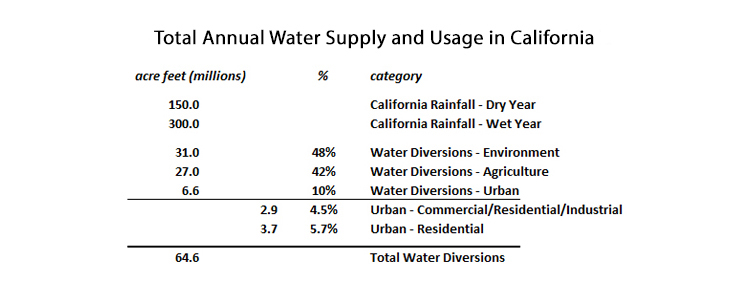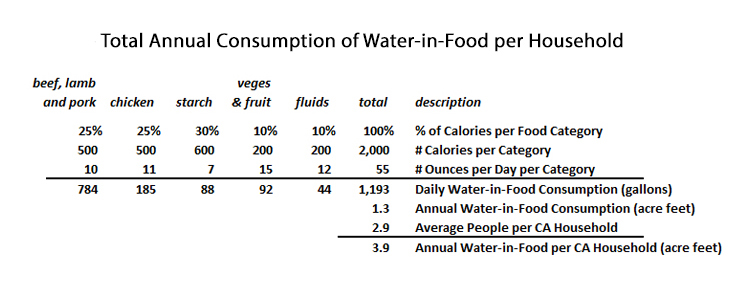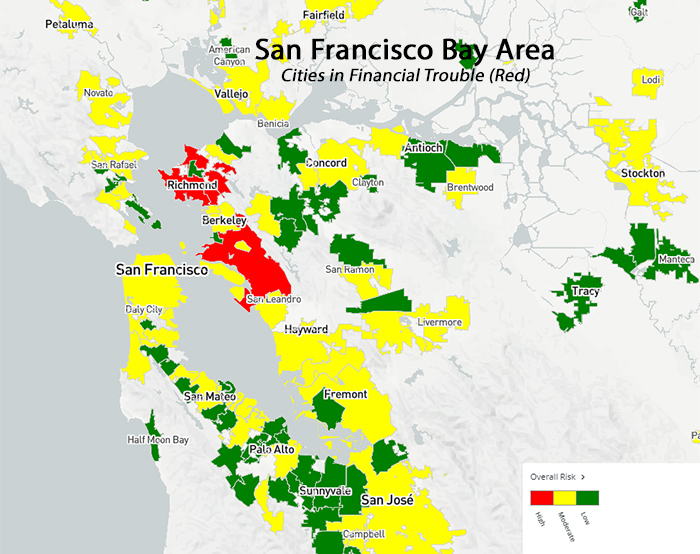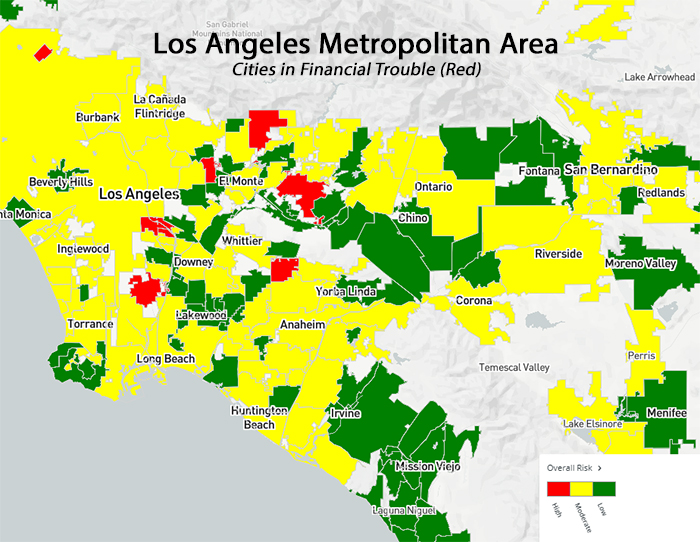Now that financial markets around the world are experiencing a long-overdue correction, the best we can hope for is that we hit bottom before a deflationary cascade causes a worldwide depression. Those economists who believe in the long-term debt cycle may claim that this time the end has arrived, and they may be right. COVID-19, oil price wars, traders and investors hating Trump—these are just pinpricks. This bubble has been inflating for decades.
There have been plenty of warnings. Interest rates at near zero in the United States and actually negative in European nations. Record borrowing by the federal government, and, possibly worse, record levels of consumer debt. Corporate borrowing to buy back stock instead of invest in R&D and plant modernization.
In January 2000, at the peak of the internet bubble, total credit market debt in the U.S. was $27.8 trillion. By October 2007, at the peak of the housing bubble, total debt had climbed to $51.4 trillion. As of October 31, 2019, the most recent period for which data is available, total debt had climbed to $73.4 trillion.
Debt accumulation is not a sustainable way to stimulate growth. At some point, there is not a mere “correction,” such as what was seen in 2000 and 2008, but a fundamental restructuring of the financial economy of nations, such as happened in the 1930s. Has that reckoning arrived?
Either way, as of close on March 12, the Dow Jones had given up nearly three years of gains, with no real end in sight.
Wall Street’s Biggest Player: Public Employee Pension Funds
Which brings us to public sector pensions, which are among the most socially divisive, economically damaging scams that nobody has ever heard of.
To get an idea of the financial scale of public pensions, note that the U.S. Census Bureau estimates the total invested assets of pension funds managed on behalf of local, state and federal government employees is $4.3 trillion. Roughly 17 percent of Americans either work for or are retired from a local, state, or federal government agency.
By contrast, the Social Security Trust Fund, serving all 327 million Americans, and in which many government employees also participate along with receiving their pensions, has a total asset value of $2.9 trillion.
This is an incredible fact. Taxpayers—who it should go without saying, are paying for both systems—have contributed to a public employee pension system that is 50 percent larger than the Social Security Trust Fund, even though Social Security serves six times as many Americans.
By now most Americans, most definitely including voters, will have stopped reading. Pension finance is a boring topic. But public sector pensions pose a far bigger threat to America’s government budgets than Social Security ever will.
For starters, Social Security is adaptable. Lower the benefits, establish means-testing for benefits, raise the contribution percent, raise the contribution ceiling, raise the retirement age; all of these options are but one congressional vote and presidential signature away from implementation. Not so with public pensions, where financially responsible modifications to the pension systems are thwarted by collective bargaining contracts and union power. How bad is the problem?
Determining just how in the red public pensions are today depends on who you ask. And thanks to lax reporting requirements, good data is typically about two years behind. A Pew Research study released in June 2019 estimated the pension funding gap, “the difference between a retirement system’s assets and its liabilities,” for all 50 states, to be just over $1 trillion. But that’s only the officially reported number.
A study conducted by the prestigious Stanford Institute for Economic Policy Research put the total at over $5 trillion. This massive disparity in estimates is because how much has to be invested today in order to fund pension payments in the future largely depends on how much pension system fund managers think their investments can earn. Private-sector pensions have to use the bank lending rate as their required earnings estimate, which is why private-sector pensions are, generally speaking, not in financial trouble.
Public-sector pensions, on the other hand, are heavily influenced by government union bosses who want to maximize pension promises with minimum input either from their members through withholding or through direct contributions by government agencies. So they hire actuaries and money managers who claim they can earn, on average, 7 percent (or more) in interest on their investments, every year, year after year.
But what happens when they don’t?
That is where we find ourselves today. Pension funds, over the long term, are considered financially “healthy” if they are 80 percent funded or more. That means, for example, if the official numbers for 2018 are correct, the public sector pension assets nationwide were $4.3 trillion, the total liability was around $5.3 trillion, and the funds in aggregate were around 80 percent funded. There are big problems with this, however.
First of all, nobody believes the collective unfunded liability of America’s public employee pension funds is only $1 trillion. As noted, the Stanford researchers put that number at over $5 trillion. But most ominous is the fact that even if these pension systems were 80 percent funded, that is not where they’re supposed to be at the tail end of an 11-year bull market. Over the past 10 years, the U.S. stock market has tripled. Why are these pension systems, at best, only 80 percent funded?
Dividing Americans, Damaging the Economy
Public employee pension funds are among the biggest players, if not the biggest players, on Wall Street. If you want to know where literally trillions of dollars are being aggressively invested in private equity deals, hedge funds, and countless other speculative investments in debt, real estate, and foreign securities including in fascist China, look no further. These funds are under relentless pressure to deliver rates of return that are historically unsustainable, and the reason they are historically unsustainable is intimately connected to the populist discontent sweeping America today.
Public-sector pension funds, because they involve trillions of dollars, are too big to beat the overall rate of investment returns, and ultimately the rate of investment returns cannot exceed the rate of economic growth. The fact that investment returns have exceeded the rate of economic growth over the past few decades is precisely the reason there has been a widening in the gap between the super-rich and the desperately poor in America. It is the reason for the financialization of the American economy, where asset bubbles create collateral to create debt to create liquidity to create consumption to create profits.
This can’t go on, but the money managers want it to go on so public sector pension systems can buy another quarter of phony solvency. The alternatives are unpleasant to contemplate.
A few years ago the largest public sector pension system in the United States, the California Public Employees Retirement System with over $300 billion in assets, announced it was going to double the required payments from participating agencies over the next five years. That process is well underway and is the primary motivation for the hundreds of local tax and bond proposals on every primary and general election ballot in the state. If there is a recession, much less a depression, it won’t be enough.
Meanwhile, in the rest of America, those private-sector workers who are required to save money in 401k plans to supplement their eventual Social Security benefit, are now watching their retirement security vaporize before their eyes.
How is this fair? How is it that public sector employees can collect guaranteed pensions that pay, on average, two to three times as much as Social Security and, on average, are collected ten years earlier in life.
Defenders of public employee pensions point out that investment returns pay most of the cost for these pensions, not taxpayers. That’s only true, however, as long as those investments continue to deliver excellent returns. Once that assumption goes off the table, taxpayers pay for public-employee pensions. This results in higher taxes and lower services, and still doesn’t solve the problem of poorly regulated pension funds rampaging through the financial sector with trillions of dollars and grossly inadequate risk aversion, since they know taxpayers will pick up the tab whenever their schemes falter.
Public Sector Union Agenda Aligns with Big Finance
Public-sector pensions are yet another reason why the big corporate and financial sector political contributions in America overwhelmingly favor Democrats. These pension systems, and the benefits they provide, establish a common interest between government workers and big finance. Through the political agenda of their public-sector unions, which are overwhelmingly Democrat, the economic interests of public employees and America’s wealthiest elites are kept in perfect alignment.
No wonder public employee unions don’t fight open border policies. Not only do millions of destitute immigrants require more government administrators at all levels, but corporate profits—to help the pension funds—are boosted by the influx of cheap labor. No wonder public employee unions love draconian environmental regulations. The regulations create artificial scarcity—especially the policies of urban densification—and scarcity creates asset bubbles which help the pension funds.
No wonder public employee unions don’t object to exporting private sector jobs—international corporate profits translate into higher investment gains. No wonder public employee unions always support more bonds and borrowing—the proceeds expand government payrolls at the same time as underwriters and investors reap billions in commissions and interest payments.
And no wonder public employee unions don’t care if the welfare state implodes when the debt bubble pops and government deficits become unmanageable. Public employees don’t depend on the same network of taxpayer-funded social entitlements as the citizens they serve. To put it in terms that are crude but regrettably accurate, American citizenship is economically irrelevant to public employees. They are a separate class of Americans, exempt from the pitfalls of stressed public services, and exempt from the perils of market crashes.
The best thing that could happen to unite Americans would be to eliminate all public sector pensions and transfer the assets into the Social Security Trust Fund. One may endlessly argue the virtues or vices of Social Security, but compared with government pensions, Social Security has not split the nation in two, nor does it pose the same financial threat.
Unlike public employee pension formulas, Social Security benefits are progressive, meaning that high-income Americans have a lower ratio of contributions made to benefits received than low-income Americans. Unlike public employee pensions, there is a cap on Social Security benefits, and there is the ability to fine-tune the system to retain solvency.
Most important, however, if there is going to be a taxpayer-funded retirement security net for all Americans, it should be one system, with one set of formulas and incentives, equally applied for all citizens. If police, firefighters, nurses and teachers are heroes that deserve generous compensation, fine, let that take the form of higher salaries. Then they might invest their monthly surpluses into 401K plans, like the rest of us. And if that’s unacceptable, then they might make common cause with their private citizen counterparts to arrive at ways to improve Social Security. But all Americans would be confronting these problems together.
Patriotic members of the public sector must make some tough choices in the coming years. If lean years come, do they want America to be run by an international plutocracy, where citizenship is meaningless, but their own jobs as government enforcers are secure and lucrative? Or do they want American citizenship to still mean something? Pensions might be a useful litmus test.
This article originally appeared on the website American Greatness.
* * *
Edward Ring is a contributing editor and senior fellow with the California Policy Center, which he co-founded in 2013 and served as its first president. He is also a senior fellow with the Center for American Greatness, and a regular contributor to the California Globe. His work has appeared in the Los Angeles Times, the Wall Street Journal, the Economist, Forbes, and other media outlets.
To help support more content and policy analysis like this, please click here.









